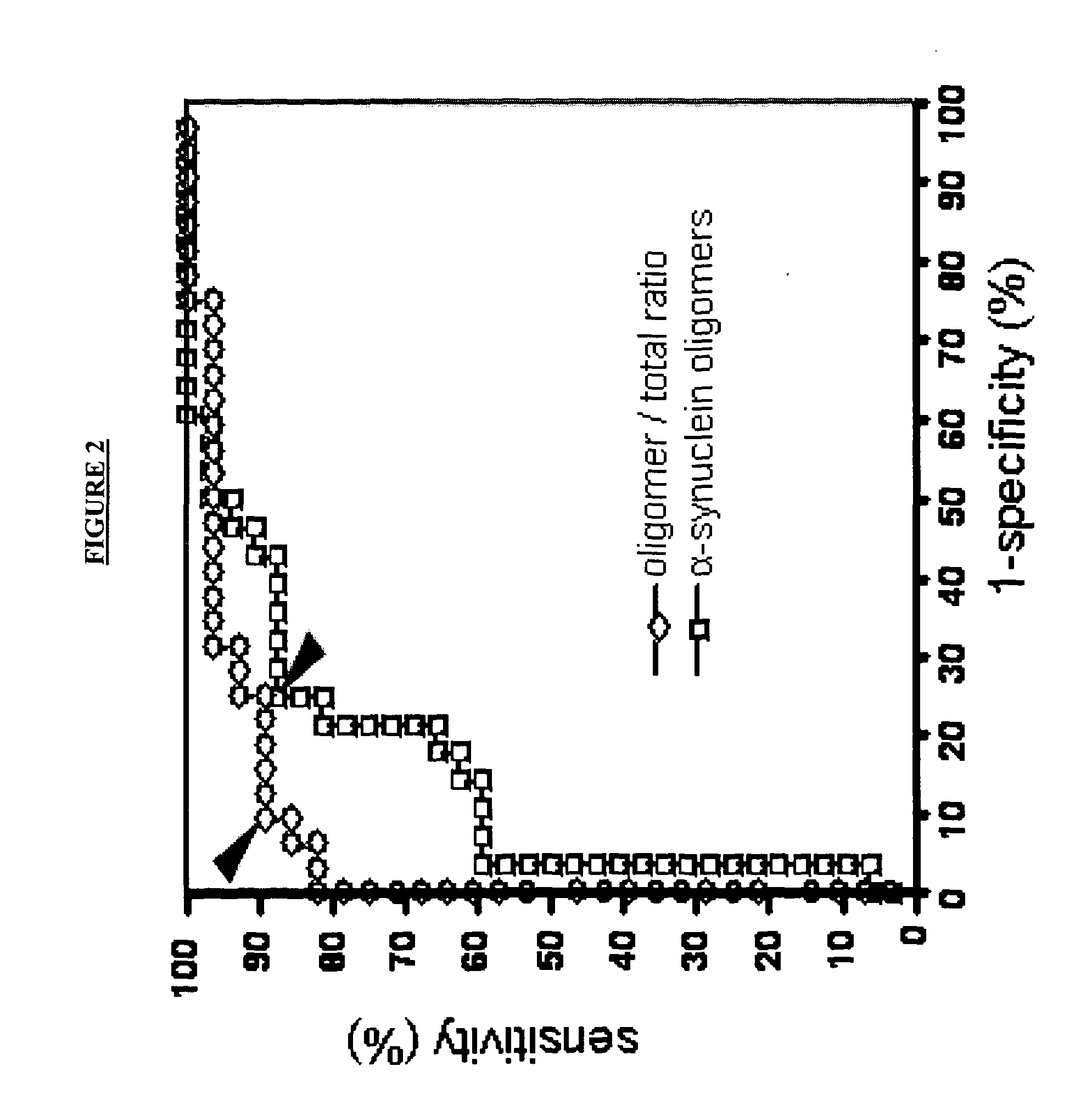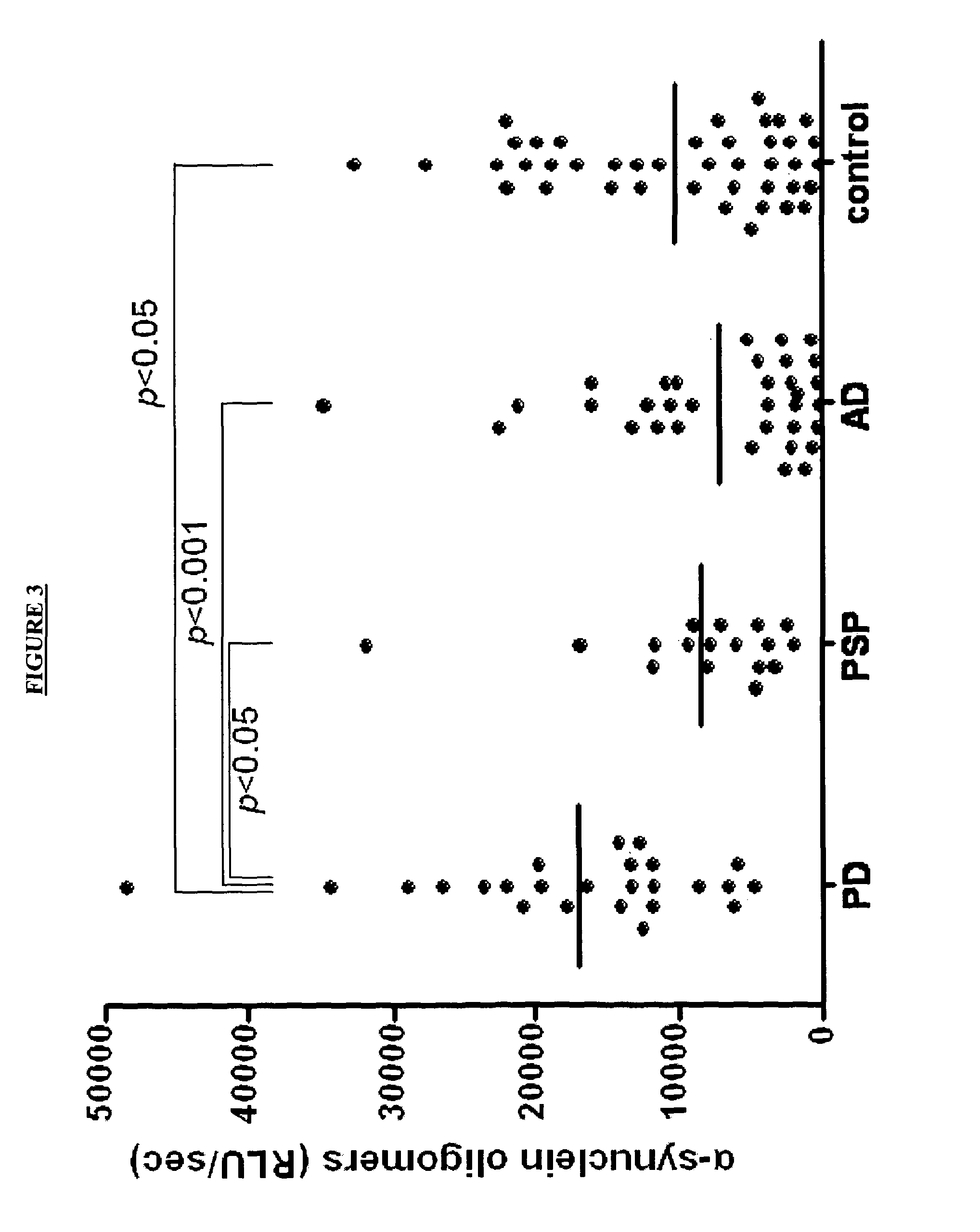Diagnostic agent for parkinson's disease
a parkinson's disease and diagnostic agent technology, applied in the field of parkinson's disease diagnostic agent, can solve the problems of affecting the discovery of effective disease-modifying therapies, and affecting the development of new treatments
- Summary
- Abstract
- Description
- Claims
- Application Information
AI Technical Summary
Benefits of technology
Problems solved by technology
Method used
Image
Examples
example 1
Subjects and Methods
Subjects
[0135]This study complied with the Declaration of Helsinki and was approved by the University Ethics Committee (Kyoto Prefectural University of Medicine, Kyoto, Japan). All of the subjects provided their written informed consent to participate in the study. 32 patients with clinically defined PD (18 men and 14 women, aged 43-83 [mean±SD, 67.3±9.4] years, see Table 1 for clinical details) were enrolled in this study, who were diagnosed according to the UK Parkinson's Disease Society Brain Bank criteria.
[0136]Three out of the 32 PD patients had dementia that had developed 1 year or more after the onset of motor symptoms, and were thereby diagnosed as PD with dementia, not as dementia with Lewy bodies. The age-matched control subjects (18 men and 10 women, aged 29-86 [mean±SD, 64.0±13.9] years) consisted of neurologically normal individuals who underwent lumbar puncture as part of diagnostic process (n=15) and controls with various neurological disorders (n=...
example 2
[0147]A larger cross-sectional study examined CSF samples from another cohort of 121 subjects, including patients clinically diagnosed with PD (n=25, aged 43-83 [mean±SD, 68.6±10.4] years), Alzheimer's Disease (AD) (n=35, aged 58-83 [mean±SD, 74.1±5.6] years) and progressive supranuclear palsy (PSP) (n=18, aged 51-78 [mean±SD, 69.4±8.1] years), and control subjects (n=43, aged 35-88 [mean±SD, 64.9±12.5] years). The patients with AD fulfilled DSMIV criteria for AD and NINCDS-ADRDA criteria for the clinical diagnosis of ‘probable AD’ (McKhann et al; Neurology 1984; 34 p939-944). Patients with PSP fulfilled the NINDS-SPSP diagnostic criteria for clinically definite or clinically probable PSP (Lityan et al; Mov. Disord 2003; 18 p467-486).
[0148]The CSF samples were analysed for α-syn levels by ELISA as described above. As in the first cohort, significantly higher levels of CSF α-syn oligomers were observed in PD cases (n=25) compared to PSP (n=18; p<0.05, Dunn's multiple comparison test)...
PUM
| Property | Measurement | Unit |
|---|---|---|
| Fraction | aaaaa | aaaaa |
| Fraction | aaaaa | aaaaa |
| Fraction | aaaaa | aaaaa |
Abstract
Description
Claims
Application Information
 Login to View More
Login to View More - R&D
- Intellectual Property
- Life Sciences
- Materials
- Tech Scout
- Unparalleled Data Quality
- Higher Quality Content
- 60% Fewer Hallucinations
Browse by: Latest US Patents, China's latest patents, Technical Efficacy Thesaurus, Application Domain, Technology Topic, Popular Technical Reports.
© 2025 PatSnap. All rights reserved.Legal|Privacy policy|Modern Slavery Act Transparency Statement|Sitemap|About US| Contact US: help@patsnap.com



